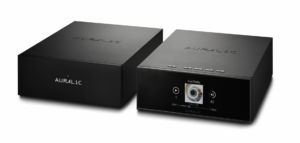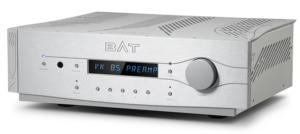
The past is a wonderful place, a rose-tinted land where nothing bad ever happened and all hi-fi sounded wonderful. In fact, viewing past products with modern-day eyes can be an alarming reality-check, because many of those ‘wonderful sounding’ products fail to live up to their reputations. However, one of the ‘sort-of’ exceptions is the Sonus faber Electa Amator line. A core part of Sonus faber’s original DNA, models like the Electa Amator II of 1987 made a sound that enticed in a cabinet that enthralled and helped cement Sonus faber’s reputation among its many fans and followers.
Those days – sadly along with Sonus faber’s original owner and designer, Franco Serblin, who died in 2013 – are gone. But Sonus faber lives on, and to celebrate its 35th anniversary in 2018, the brand announced its new Heritage collection, thus far comprising two models; the Minima Amator II and the Electa Amator III tested here. Both are two-way stand-mount loudspeakers that echo much of the design, technology, and sound of classic Sonus faber speakers of old.
However, simply preserving the 1980s and 1990s in aspic and producing what would be effectively clones of past masterpieces would be wholly wrong. Music and design (both industrial design and what’s possible from a loudspeaker) have moved on, and to copy slavishly the past risks damaging both the present and past reputation. So, instead Sonus faber took the longer route, making a product that pays tribute to that past without pastiche, and bringing it up to date without undermining the core values of what Sonus faber stood for then, and stands for now. In other words, a complete re-evaluation from first principles.
If anything, this is one of the hardest tasks of their careers for both Sonus faber’s Chief Design Officer Livio Cucuzza and R&D Manager Paolo Tezzon. The brand now has several key lines, from value-driven models to high-performance, cost-no-object designs, and many of these products are regularly refreshed and revised. This is different. The Electa Amator – alongside the Extrema – is to many the Platonic Form of a Sonus faber loudspeaker, and unlike the Extrema, the Electa Amator was less demanding and expensive than the Extrema and therefore more widely known and experienced. Not only does it demand to be a stand-mount with a sumptuous finish of wood, leather, metal, and stone, but if you mess up a product that carries the Electa Amator name, it’s only one step removed from outright heresy among the cognoscenti. Fortunately, Cucuzza and Tezzon have good ‘form’ in terms of making great products (both visually and sonically) and they don’t put a foot wrong here.

The loudspeaker features Sonus faber’s 28mm silk fabric dome tweeter that uses the company’s ‘Arrow Point’ Damped Apex Dome technology… but this time connected to the tweeter horn by three points instead of two, to hark back to the originals. This tweeter sits in a wooden rear acoustic chamber of its own, which is just visible from the rear port (bring a torch!). The 180mm mid-woofer is unique to the design, using a cellulose pulp cone with a matching dust cap instead of a phase plug. It uses a cabinet made from 25mm thick sheets of solid walnut, with three constrained damping layers.
As with all modern Sonus faber loudspeakers, the crossover comes in for special treatment. It uses the company’s patented anti-resonant Paracross technology, which is claimed to optimise phase and amplitude response “for optimal space/time performance”. This bristles with high-grade components, such as non-polarising capacitors from Clarity Cap and low-resistance inductors from Jantzen. The two drive units cross over at 2.5kHz.
You are almost immediately aware that you are in the presence of Italianate luxury with the Electa Amator III, arguably even more so than its predecessor from the 1980s. The puffy cheeks of the side panels of the Amator II are now removed to the leather-finished front baffle, and the rear driver is replaced by a rear port, but the basic layout remains almost identical. The additional luxury touch is the 30mm thick Carrara marble base plate (which echoes the marble base plate of the Amator III stand) and this is delineated from the Walnut side and top by a thin sheet of brass (similar in colour to the Sonus faber front logo and the bi-wire rear panel). In less design-capable hands this marbled base could look tacky, but here it just drips elegance. Yes, it means the Amator III isn’t going to fit snugly into some chintzy shag-pile throwback of a home, but if you own an Eames lounge chair and it doesn’t look out of place, the Amator III fits perfectly. A convex grille is also available for those who don’t like the look of drive units.
Like its predecessors, the Electa Amator is designed to be relatively easy to drive, with an 88dB sensitivity and a nominal impedance of four ohms. This is more about quality than quantity and a good amplifier will drive these speakers well, rather than calling on a noted powerhouse. Curiously, Sonus faber recommends the speakers and the listener each sit at the vertices of an equilateral – rather than isosceles – triangle. This makes for a very near-field listening position, but in fairness it works. The more commonplace isosceles triangle (with the listener at the apex and the loudspeakers at each base vertex) works too, but in fairness to Sonus faber I tried the equilateral positioning and it worked better. This does need a room where there can be a good metre or so from the rear and side walls, and similar behind the listener’s head, but the performance is well suited here.
The loudspeaker harks back to past glories in a hint of old-school Sonus faber warmth; there’s a silken refinement to the midrange and upper registers that really brings out the richness and sublime nature of voices and acoustic instruments. Sonus faber was always really good at making a violin sound beautiful and there is no change here; Ruggiero Ricci’s violin playing on Paganiniana [Water Lily LP] is never less than sonorous and precise, but here takes on a masterful quality. In truth, I’m a bit ‘hot and cold’ on this album; it’s beautifully recorded but so close mic’d it rarely lets the musicianship shine through. Here, however, the beauty of the recording, the tonality of the instrument and the quality of the playing all meet in between the loudspeakers. This kind of sound is classic-era Sonus faber, but with more tonal accuracy and modern-day speaker honesty to keep going in today’s world, meaning that violin sounds more like a violin and less like the sonic equivalent of a masterly oil painting of a violin.

The other major Sonus faber characteristic inherited from past masters is the uncanny way this is a big loudspeaker that just happens to live in a small box. The sound it produces is extraordinarily large, almost always right-sized, with the kind of holographic image so real sounding, you could sub-let the soundstage to a young family. In this, the Sonus faber occupies the best of both worlds; a stereo image that is almost coming from a tiny point-source, coupled with the sort of scale and bass depth that makes you think of big floorstanders. ‘Congo Man’ from Ernest Ranglin’s Below the Basslinealbum [Island] highlights this well, with the underpinning of reggae bass lines and drums sounding vast and that sweet guitar sound picked out perfectly in the sound field.
There is no getting around the laws of physics; you can bend them, but you can’t break them. In this case, that big and impressive sound comes at the cost of absolute beat-precision. In truth, this probably only really manifests if you are really into techno music, where the big port helping to make the huge sound begins to make its presence felt. However, this is not so much a typical chuffing sound you might hear from an intrusive port, and certainly has no lack of energy. In other words, it’s perhaps more ZZ Top than Skrillex… which is no bad thing.
Most of all, though, Sonus faber has made a thoroughly modern time machine in the Electa Amator III. It retains much of the inviting sound of old, without showing up the limitations of the past in the present. It’s detailed, dynamic, has a beautifully-constructed soundstage, and best of all sounds bloody lovely when playing music, which is kind of the point of a pair of loudspeakers. They say beauty is only skin deep; Sonus faber’s Electa Amator III begs to differ. It’s as lovely on the inside as it is on the outside.
TECHNICAL SPECIFICATIONS
Type: Two-way, ported standmount loudspeaker
Drive unit complement: 1× H28 XTR-04 Damped Apex Dome 28mm silk tweeter, 1× MW18XTR-04 180mm cellulose pulp cone mid-bass driver
Frequency response: 40Hz–35kHz
Sensitivity: 88dB SPL (2.83V/1m)
Nominal Impedance: 4Ω
Amplifier power handling: 35–200W
Dimensions (H×W×D): 37.5 × 23.5 × 36cm (excl stands)
Weight: 14.6kg each (excl stands)
Price: £9,000 per pair
Manufactured by: Sonus faber SpA
URL: sonusfaber.com
Distributed in the UK by: Absolute Sounds
URL: absolutesounds.com
Tel: +44(0)20 8971 3909
Tags: FEATURED














